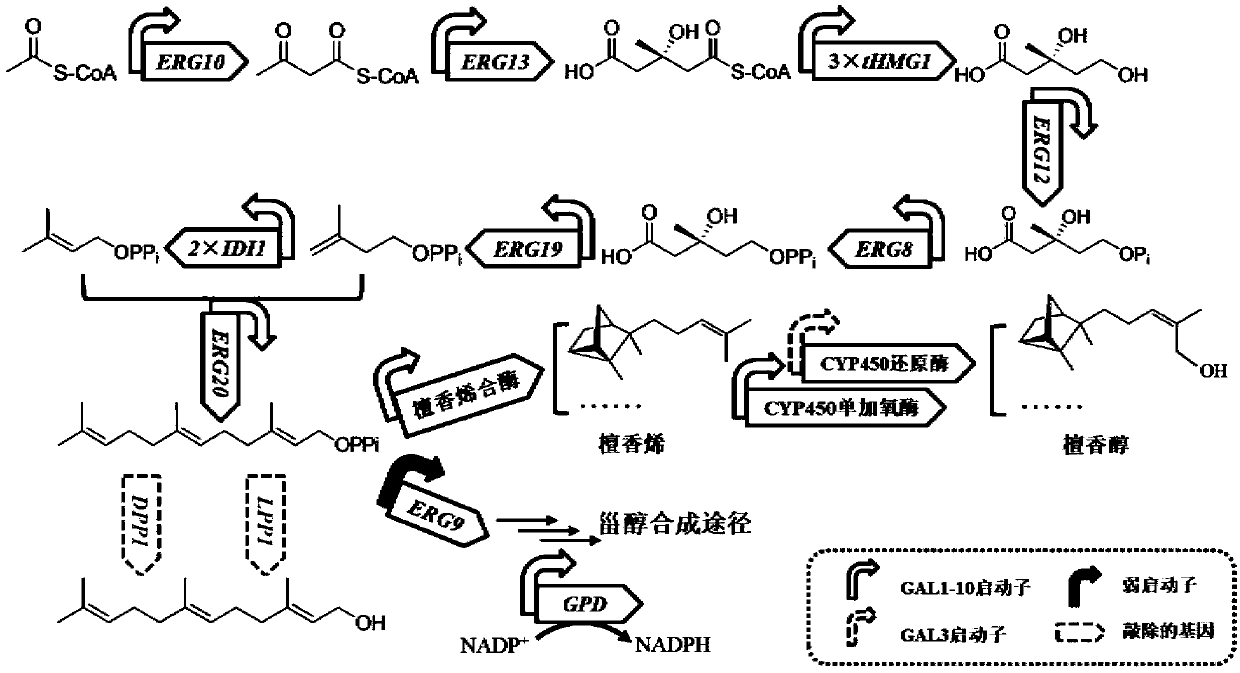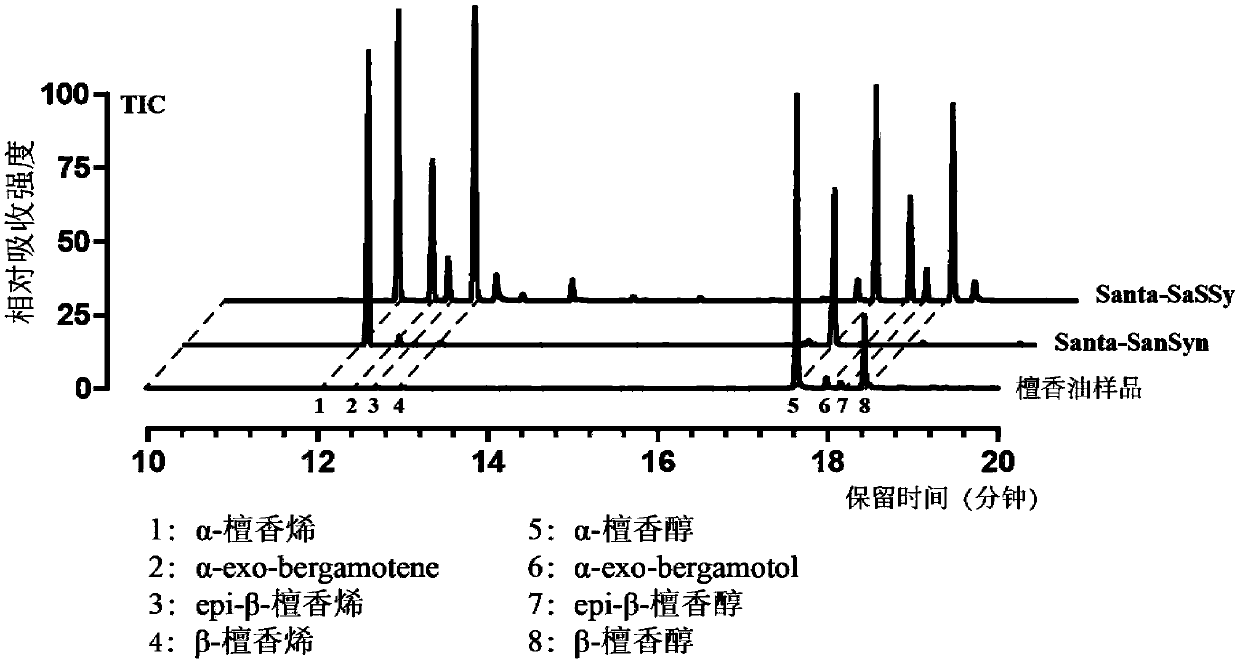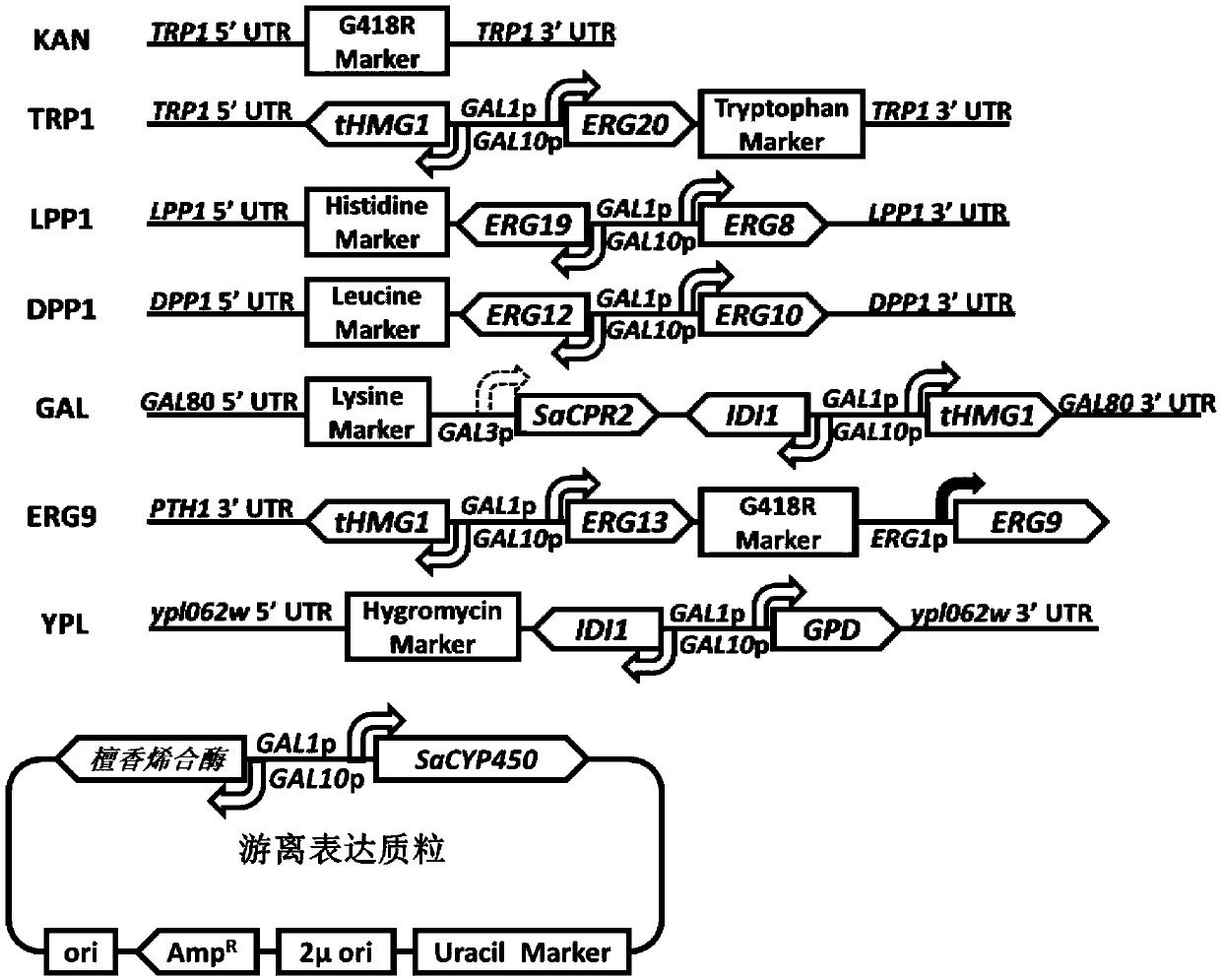Recombinant saccharomycetes for high yield of sandalwood oil as well as construction method and application thereof
A construction method and technology of sandalwood oil, applied in the field of genetic engineering, can solve problems such as no successful cases
- Summary
- Abstract
- Description
- Claims
- Application Information
AI Technical Summary
Problems solved by technology
Method used
Image
Examples
Embodiment 1
[0034] The construction method of the recombinant saccharomyces cerevisiae of embodiment 1 high yield sandalwood oil
[0035] The invention describes a method for constructing a recombinant Saccharomyces cerevisiae with high sandalwood oil production. The method includes a large number of molecular biology experimental techniques, including restriction endonuclease digestion of DNA molecules, connection of DNA fragments, and colonization of DNA molecules. Bacillus transformation, cultivation of Escherichia coli, extraction of Escherichia coli plasmid, transformation of Saccharomyces cerevisiae, etc. Unless otherwise specified, the specific technical details are conventional means known to those skilled in the art. Escherichia coli and plasmid pUC19 used in the gene cloning work were purchased from Beijing Quanshijin Biotechnology Co., Ltd., item number: CD101-02. Plasmid pEASY-Blunt Simple was purchased from Beijing Quanshijin Biotechnology Co., Ltd., hereinafter referred to ...
Embodiment 2
[0078] Embodiment 2 fermentation recombinant strain produces sandalwood oil
[0079] The high-yielding sandalwood oil-producing recombinant Saccharomyces cerevisiae strain constructed in this study adopts synthetic medium fermentation conditions and uses bioreactor fermentation to produce sandalwood oil. The media formulations involved are as follows:
[0080] The components of the plate medium include: 6.7g / L yeast base without amino acid nitrogen source, 1.92g / L yeast synthetic medium without uracil supplement, 20g / L glucose, 2.0% agar powder. Among them, yeast without amino acid nitrogen source base, manufacturer name: Yeast Nitrogen Base Without Amino Acids, brand: SIGMA-ALDRICH, item number: V900895-100G. Yeast Synthetic Drop-out Medium Supplements without uracil: manufacturer name Yeast Synthetic Drop-out Medium Supplements without uracil, brand: SIGMA-ALDRICH, product number: Y1501-20G.
[0081] The components of the seed medium include: 19.5g / L glucose, 15g / L ammoniu...
Embodiment 3
[0091] GC-MS detection of embodiment 3 high-yield sandalwood oil strains and the quantification of its sandalwood oil output
[0092] (1) GC-MS detection method of samples
[0093] Sandalwood oil sample processing: After the organic phase of the fermentation broth is filtered through a 0.22 μm filter membrane, it can be directly sent for testing. When quantifying, it should be properly diluted with n-dodecane as a solvent according to the estimated concentration, and then placed in a sample bottle for delivery. Sample detection was used to ensure that the detection concentration was within the linear range of the standard curve during quantification. During the GC-MS quantification process, the internal standard was selected from α-Humulene purchased from Sigma-Aldrich. The reference product was commercially purchased sandalwood oil, which was used as a qualitative and quantitative reference after purification. GC-MS adopts Shimadzu QP2010GC-MS detection system, ion scanning ...
PUM
 Login to View More
Login to View More Abstract
Description
Claims
Application Information
 Login to View More
Login to View More - R&D
- Intellectual Property
- Life Sciences
- Materials
- Tech Scout
- Unparalleled Data Quality
- Higher Quality Content
- 60% Fewer Hallucinations
Browse by: Latest US Patents, China's latest patents, Technical Efficacy Thesaurus, Application Domain, Technology Topic, Popular Technical Reports.
© 2025 PatSnap. All rights reserved.Legal|Privacy policy|Modern Slavery Act Transparency Statement|Sitemap|About US| Contact US: help@patsnap.com



